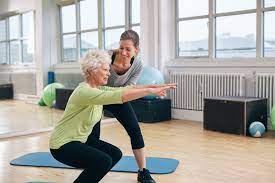Streaming Spotlight by Cindy Summers
Where the Crawdads Sing – Netflix

Breeze rating from 1 to 4 palm trees, 4 being best.
When a young man from a wealthy family was found dead at the base of a fire tower in a North Carolina marsh, the police decided to blame a young woman named Kya (Daisy Edgar-Jones) who was known as the “Marsh Girl” as she was an outsider and an easy target for injustice. When Kya was young her mother was abused by her father and left, then her two sisters and finally her brother left as well. She spent time with her father though he eventually left too, but she didn’t tell anyone and spent time at the marsh store that was run by a black family who looked out for her.
Kya traded muscles she harvested in the marsh for grits, which was easy as the marsh was her home and where she met Tate (Taylor John Smith), a young boy who also loved the marsh. As they grew older he would bring Kya feathers and vegetable seeds, along with notes. When Kya shared she couldn’t read Tate said he would teach her. When his father showed concern for their friendship, Tate explained that people in the town treated Kya horribly and she couldn’t go to school so he was helping her to learn to read, bringing her books and other things she needed.
Kya and Tate became very close, but Tate was soon off to college, though had plans to come back for Kya. Tate had some understanding of the family issues Kya was dealing with as he lost his mother and sister in a car wreck. They spent one last night together before he left for college, and Tate gave Kya a list of publishers to help publish her nature notes and drawings from the marsh as he said there was nothing out there like it and that she could make a life from it.
They agreed to meet at their favorite beach in the marsh on July 4th, but Tate never showed, leaving Kya heartbroken with yet another person that walked out of her life. Kya retreated back to her home in the marsh for several years when she discovered developers were looking to buy the land in her area and due to an $800 tax bill on the house she could lose it. This prompted Kya to follow Tate’s advice and contact publishers to sell her work.
Kya had lived in the marsh on her own for 10 years when Chase (Harris Dickinson) came into her life. He was from a socialite family and approached Kya to invite her to a picnic on his boat Sunday. Chase made a pass at Kya, making her feel very uncomfortable, so he asked to make it up to her by taking her up to the fire tower where he promised to not make any unwanted advances towards her and after they began to meet regularly in the marsh.
Chase took Kya to a hotel where they were together for the first time, and she gave him a shell necklace she made that he wore from then on. Chase said he wanted to marry Kya, but later Kya saw Chase in town with a girl who introduced herself as his fiance. Kya told Chase to leave her alone, but he followed her to her place. He hit Kya but she hit him back, then he threw her to the ground and tried to rape her. She got away and told him to leave her alone or she would kill him
Kya went back home and Chase had destroyed her place. A few days later his body was found at the base of the fire tower and the police arrested Kya. With sham evidence and no real apparent motive, local attorney Tom Milton (David Strathairn) offered to take Kya’s case. He showed the sheriff requested the forest service to repair the dangerous grates on the tower as well as established that Kya had an alibi as she was out of town to meet her publishers. One interesting fact was that Chase was missing his shell necklace. Would Kya be found innocent, and if Kya didn’t kill Chase then who did? The ending sheds light on some interesting revelations.
Runtime: 2h 5m



